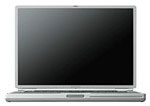Apple Archive
Radio Design and the Mac, Part 2
- 2001.09.28
My earlier article comparing the design of Macintosh computers and antique radios proved to be very interesting to write, so this week I have continued the idea to talk about the hardware components and the idea that both Macs and antique radios have a certain way of simplicity about them that is appealing.
In 1991, when the Quadra 700 was released, Apple had their own custom power supplies, hard disks, CD-ROM drives, logic boards, and more. Today, Apple has switched to using more generic parts. The hard drive, DVD-ROM, power supply, and video card inside the Power Mac G4 are not Apple specific. The RAM inside the new iMac is not Apple specific.
By the mid-1960s, it was almost impossible for a U.S. radio company to survive unless it built its radios with some foreign made components. Even Zenith, which was one of the last companies with a transistor radio made entirely from U.S. components, eventually resorted to using foreign components.
One of the reasons why the Macintosh is popular is because it is very straightforward. The Macintosh is for getting work done, not trying to make it work. You don't usually have to play with it too much to get the settings the way you want them. One may argue that Windows is better because it has more preferences that you can set. Think about it. Do you really need to be able to set a picture that you see on a website as your desktop picture without downloading it to the hard drive? Do you need to change the colors of the menus and the style of system font?
The average home computer user uses the Internet, email, and word processing. The Macintosh includes an easy to use email program, a fast Web browser, and a full featured word processor, spreadsheet, and presentation suite known as AppleWorks (for the record, AppleWorks is only free with the iMac and iBook).
One of the reasons old radios are popular is because when they work, they work well, sound good, and are simple to use. Think about it. Do you really need stereo sound? Do you need a graphic equalizer? If you want to listen to the radio, you probably don't need 25 switches on the front. The average radio user only really uses two of those switches. Power/volume and tuning. Wouldn't it make things simpler if your radio only had a few switches?
I personally use a 1958 Zenith AM/FM radio in the kitchen, and I listen to it every morning. I like it, not just because it is old, but because it is easy to adjust the settings (volume, tuning), it picks up a lot of stations (stations from NY city [I live in southern Connecticut] come in as if they were local), and it sounds very good. No, it does not have presets, but I have done the next best thing. I bought some sticky labels, cut them in small pieces, and wrote down the call letters of the stations I like. Then I stuck them next to the position on the dial (no, it does not ruin the dial face on this radio) of that station. Now if I want to tune into a station quickly, I know just where to find it on the dial.
Apple, like radio manufacturers of the 1920s and 30s, is betting on people buying a computer because it looks nice and works well. This appeals to many people - the looks of my computer are important to me. And if it works well, that's even better. When a computer works well, without slowdowns or crashes, it actually puts me in a better mood.
Whatever type of radio you choose to use, there is an
unmistakable similarity between antique radios and Macintosh
computers. Both have form and function. An antique radio looks
great (at  least most of them do), and, when
working, is very simple to use and does just what you want it to.
Macintosh computers look great (especially the TiBook), are very simple to use, and do just
what you want them to.
least most of them do), and, when
working, is very simple to use and does just what you want it to.
Macintosh computers look great (especially the TiBook), are very simple to use, and do just
what you want them to.
The following are some links to websites where you can obtain more information about antique radios and design.
- The Antique Radio Page
- Radio Attic Archives
- Urban Antique Radio
- Radio Designers
- Raymond Loewy
- Inventing the "Jet Age" in America
- Television Designers
- John Vassos Bibliography: Biographical Information
There are many more websites to visit. For further information I suggest doing a search on Google.
About LEM Support Usage Privacy Contact
Follow Low End Mac on Twitter
Join Low End Mac on Facebook
Favorite Sites
MacSurfer
Cult of Mac
Shrine of Apple
MacInTouch
MyAppleMenu
InfoMac
The Mac Observer
Accelerate Your Mac
RetroMacCast
The Vintage Mac Museum
Deal Brothers
DealMac
Mac2Sell
Mac Driver Museum
JAG's House
System 6 Heaven
System 7 Today
the pickle's Low-End Mac FAQ
Affiliates
Amazon.com
The iTunes Store
PC Connection Express
Macgo Blu-ray Player
Parallels Desktop for Mac
eBay

